
The Opalio brothers have been reliably surprising me with adventurous detours and evolutions for years, but this latest album is a creative leap into even more unexpected territory than usual. In some ways, that can be attributed to the unusually sparse gear involved (two glockenspiels and a single condenser microphone), which makes it quite a bit easier on the ears than usual for the dissonance-averse. In fact, I would not even have immediately guessed that this was an MCIAA album if I had first heard it while blindfolded. On a deeper level, however, this may very well be one of the duo's defining statements (and a sneakily brilliant one at that). The Opalios long ago cast aside earthly melodies, harmonies, and instruments in their journey into the furthest regions of the atonal, psychedelic cosmos, so I would be hard pressed to think of something even more outré for the next phase. As it turns out, however, I would have been asking the wrong question altogether, as the Opalios nimbly sidestepped that stylistic challenge and opted for something far cooler than another intensification of their characteristic otherworldliness: they dissolved into pure light (musically, at least). Put in their own words, this album represents "the blinding darkness coming from a dying flame and a new light not yet discernible on an increasingly undefined horizon." Given how rampant dying flames and undefined horizons are these days, Music for Phantoms (IV) feels uncannily tapped into the earthly zeitgeist (particularly for a duo who frequently seem to exist in an alternate dimension).
Elliptical Noise/Opax
In characteristically colorful fashion, the Opalios describe the genesis of Music for Phantoms (IV) thusly: "recorded in the middle of the night...in the Western Alps with only 2 glockenspiels, wordless vocals and a single condenser microphone to capture the essence of the screaming silence." Naturally, the cover art thematically complements that vision, as it comes from a Polaroid that abstractly captured a light installation that the brothers dragged through the snow at night (few artists are as tirelessly committed to finding and creating otherworldly beauty, magic, and poetry as the Opalio brothers). While nearly everything about this album feels fresh, inventive, and heartfelt, it is nominally a continuation of a side project that began in 2007 and last surfaced a decade ago. Notably, this album is a radically different animal than the first three installments in both tone and instrumentation, but it does share the series' exclusive commitment to acoustic sounds. Even acoustic sounds can be very weird in the hands of the Opalios, however, as evidenced by the first two minutes of the opening "Traces of Shooting Stars" (it calls to mind a bunch of marbles dropped on a metal platter). That is admittedly an enigmatic and curious way to kick off an album this tenderly beautiful, but absolutely everything that follows is quietly and mesmerizingly sublime.
Given the album's hyper-minimal instrumentation, its three pieces all feel roughly cut from the same cloth, but they each have their own distinctive character. In "traces of shooting stars," for example, it sounds like an enchanted music box has become untethered from the rigidity of time signatures and drifted into a reverie of dreamlike, gossamer melody. The following "ocean of iridescent silence," on the other hand, takes a more shimmering and rippling approach, as the endlessly sweeping glockenspiel runs leave a quivering haze of celestial bliss in their wake. The closing "estranging analog morphologies" initially feels quite similar (sweeping cascades of notes leave behind a blurred and beautiful vapor trail), but it steadily becomes more structured and percussive before unexpectedly dissolving into a quietly lovely and hymn-like final act. It was a genuine surprise to hear Roberto's voice used in such a naked and melodic way. I am reluctant to use the word "ambient" to describe the overall feel of Music for Phantoms (IV), as it is constructed from Coltrane-esque sheets of sound, but it does evoke a pleasant state of suspended animation and strong sense of place: this album makes me feel like I have just stepped out of my remote mountain cabin to take in a gorgeously hallucinatory canopy of swirling and shimmering stars. I cannot think of any other album that successfully casts a similar spell and it is quite a lovely and immersive place to linger, so Music for Phantoms (IV) will probably connect with a hell of a lot more people than My Cat is an Alien's more characteristically challenging vision. It certainly deserves to reach a lot of new ears, as it feel like one of the strongest and most focused albums of the Opalios' career.
Samples can be found here.
 On the trio's first album in seven years (the largest period of dormancy ever for them), Locrian simultaneously return to their origins while evolving and refining their sound forward. Stripped back to the barest essence of their sound but with some 17 years of evolution, New Catastrophism feels both like a reset but also a culmination of everything they have accomplished thus far.
On the trio's first album in seven years (the largest period of dormancy ever for them), Locrian simultaneously return to their origins while evolving and refining their sound forward. Stripped back to the barest essence of their sound but with some 17 years of evolution, New Catastrophism feels both like a reset but also a culmination of everything they have accomplished thus far.

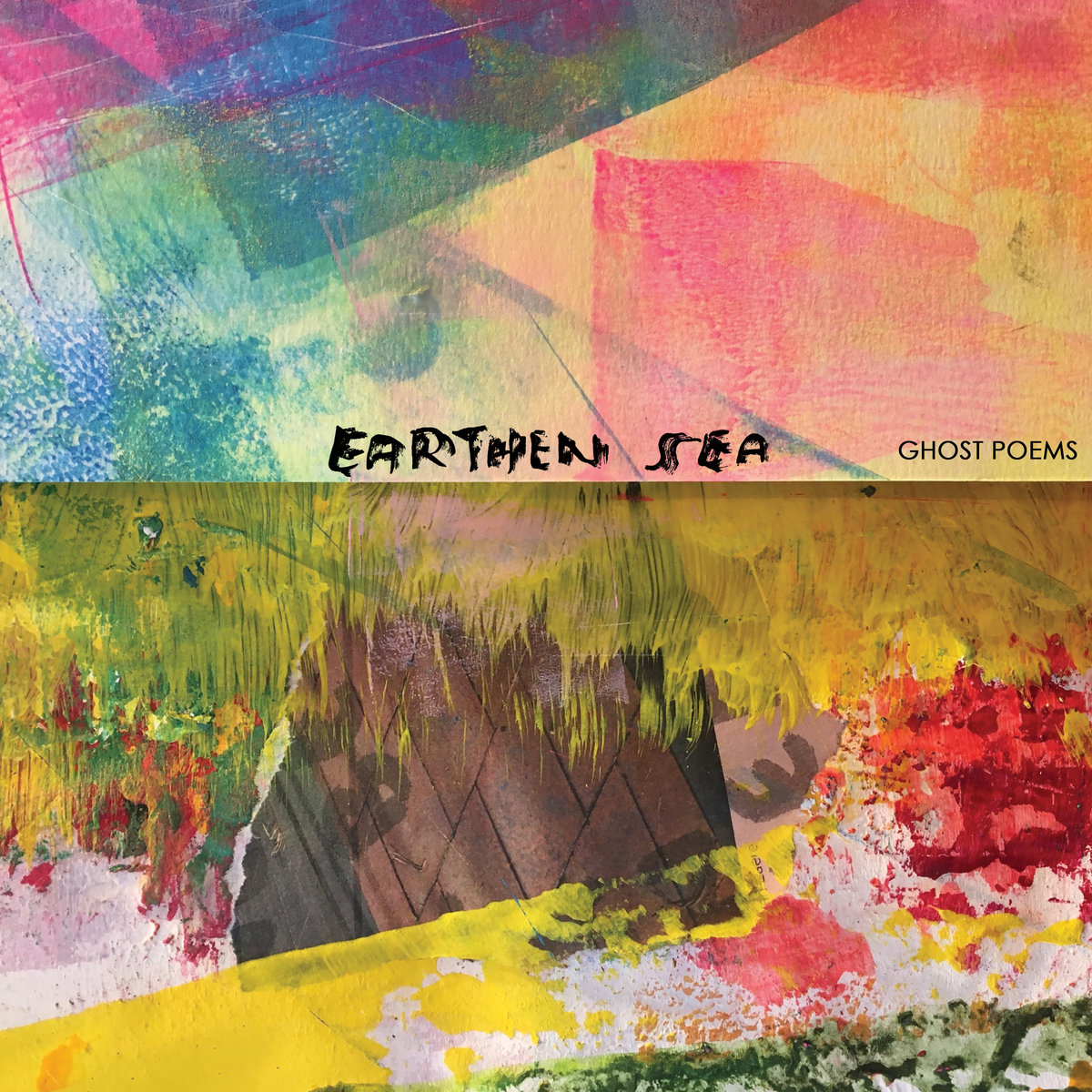 This latest release from the long-running ambient dub solo project of erstwhile Mi Ami/Black Eyes bassist Jacob Long is stirring up some feelings of regret about how I managed to sleep on this project for so long. While I am not yet sure if Ghost Poems simply caught me at the right time or if Long has been unusually inspired recently, my previous exposures to Earthen Sea left me feeling like the ambient/dub balance was too heavily weighted towards the "ambient" side to leave a deep impression. I suspect the balance has not changed all that much since I last checked in, but Long seems to have made a big leap forward in perfecting his execution with this album (it "further refines his fragile, fractured palette into fluttering arrythmias of dust, percussion, and yearning," according to the label). Apparently, I am very much into fluttering arrhythmias of yearning now, as the first half of this album boasts a handful of pieces that can stand with just about anything in Kranky's rich and influential discography: rather than resembling dub techno that has been deconstructed and dissolved into a soft-focus haze, Ghost Poems often feels like Long has managed to seamlessly combine the best of ambient and the best of dub techno into something fresh, wonderful, and uniquely his own.
This latest release from the long-running ambient dub solo project of erstwhile Mi Ami/Black Eyes bassist Jacob Long is stirring up some feelings of regret about how I managed to sleep on this project for so long. While I am not yet sure if Ghost Poems simply caught me at the right time or if Long has been unusually inspired recently, my previous exposures to Earthen Sea left me feeling like the ambient/dub balance was too heavily weighted towards the "ambient" side to leave a deep impression. I suspect the balance has not changed all that much since I last checked in, but Long seems to have made a big leap forward in perfecting his execution with this album (it "further refines his fragile, fractured palette into fluttering arrythmias of dust, percussion, and yearning," according to the label). Apparently, I am very much into fluttering arrhythmias of yearning now, as the first half of this album boasts a handful of pieces that can stand with just about anything in Kranky's rich and influential discography: rather than resembling dub techno that has been deconstructed and dissolved into a soft-focus haze, Ghost Poems often feels like Long has managed to seamlessly combine the best of ambient and the best of dub techno into something fresh, wonderful, and uniquely his own. Similar to his recent works Family Secret and House Blessing, the newest work from drummer/percussionist Jon Mueller features little in the way of overt rhythms or obvious instrumentation. Instead, The Future is Unlimited, Always captures Mueller at his most spacious: layers of frequencies and tones that are as engaging as they are mysterious, and capturing more than just audio, but a deeper sense of existence.
Similar to his recent works Family Secret and House Blessing, the newest work from drummer/percussionist Jon Mueller features little in the way of overt rhythms or obvious instrumentation. Instead, The Future is Unlimited, Always captures Mueller at his most spacious: layers of frequencies and tones that are as engaging as they are mysterious, and capturing more than just audio, but a deeper sense of existence. In general, releasing a three-hour album is a highly dubious endeavor, as such an extreme length usually turns even very good music into an endurance test and virtually guarantees that few people will ever listen to the entire opus more than once. When "Memphis dronegaze cult" Nonconnah do it, however, it feels like an absolute godsend. Part of that is because the husband/wife duo of Zachary and Denny Wilkerson Corsa lead what is possibly the most consistently fascinating and wonderful shoegaze/drone project around, but there is an equally important second part as well: the Corsas seem to be constantly collaborating with a host of talented guests. Unsurprisingly, that generates an ungodly amount of material and each major new Nonconnah album feels like a mere tantalizing glimpse into the innumerable killer jams and recording sessions that led up to the release. When I say that Don't Go Down to Lonesome Holler could have probably been an equally brilliant six- or nine-hour album, it is not hyperbole: there are over 50 credited performers involved in this album including folks from heavy hitters like Archers of Loaf, Swans, and No Age (as well as more than 60 instruments ranging from singing saws to cats). My guess is that the only limiting factor was how much time the Corsas could spend culling and editing their mountain of killer material without starting to lose their goddamn minds. This album is an absolute revelation ("Nonconnah's most comprehensive vision yet for the American halfpocalypse," according to the label).
In general, releasing a three-hour album is a highly dubious endeavor, as such an extreme length usually turns even very good music into an endurance test and virtually guarantees that few people will ever listen to the entire opus more than once. When "Memphis dronegaze cult" Nonconnah do it, however, it feels like an absolute godsend. Part of that is because the husband/wife duo of Zachary and Denny Wilkerson Corsa lead what is possibly the most consistently fascinating and wonderful shoegaze/drone project around, but there is an equally important second part as well: the Corsas seem to be constantly collaborating with a host of talented guests. Unsurprisingly, that generates an ungodly amount of material and each major new Nonconnah album feels like a mere tantalizing glimpse into the innumerable killer jams and recording sessions that led up to the release. When I say that Don't Go Down to Lonesome Holler could have probably been an equally brilliant six- or nine-hour album, it is not hyperbole: there are over 50 credited performers involved in this album including folks from heavy hitters like Archers of Loaf, Swans, and No Age (as well as more than 60 instruments ranging from singing saws to cats). My guess is that the only limiting factor was how much time the Corsas could spend culling and editing their mountain of killer material without starting to lose their goddamn minds. This album is an absolute revelation ("Nonconnah's most comprehensive vision yet for the American halfpocalypse," according to the label).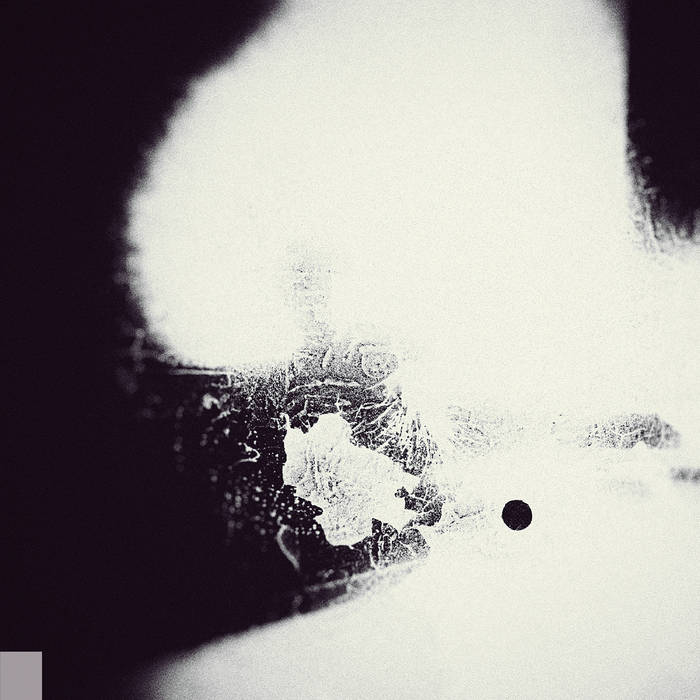 Following a multitude of self-released tapes and digital releases, Vagrancies is Austin, Texas's Andrew Anderson's first CD based work. Ostensibly created by the instrumentation and sources listed in the disc's liner notes, Anderson's treatment renders them largely unidentifiable, instead using them to construct something else entirely. Consisting of four long-form pieces connected with shorter interludes, Vagrancies covers a lot of ground, with an impressive amount of variety from piece to piece, but still a strong sense of continuity from one piece to the next.
Following a multitude of self-released tapes and digital releases, Vagrancies is Austin, Texas's Andrew Anderson's first CD based work. Ostensibly created by the instrumentation and sources listed in the disc's liner notes, Anderson's treatment renders them largely unidentifiable, instead using them to construct something else entirely. Consisting of four long-form pieces connected with shorter interludes, Vagrancies covers a lot of ground, with an impressive amount of variety from piece to piece, but still a strong sense of continuity from one piece to the next. I feel like I got into this Slovenian "imaginary folk" trio a bit late, as 2019’s A Universe That Roasts Blossoms For A Horse was the first Širom album that I picked up. However, it also seems like each new album is the perfect time to discover Širom and those who join the party with this latest release are in for a real treat. Along with Belgium’s Merope and the scene centered around France’s Standard In-Fi and La Nòvia labels, Širom are one of the leading lights in a new wave of imaginative and adventurous international folk ensembles and this fourth album is their most expansive to date (“for the first time the trio…ignore the time constraints of a standard vinyl record to fashion longer, more fully developed entrancing and hypnotizing peregrinations”). Aside from making stellar use of their newly expanded song lengths, it feels like some delightful jazz influences have crept deeper into Širom’s DNA as well, as a couple of pieces feel like the various members trading wonderfully wild, visceral, and hallucinatory solos over strong, unconventional vamps (the album description also explicitly notes that Širom “echo the borderless, collective spirit of groups like Don Cherry's Organic Music Society and Art Ensemble of Chicago”). Obviously, that is enviable and excellent company to be associated with, but Širom’s influences transcend perceived boundaries of time and space so fluidly that trying to forensically determine the contents of their record collections is both hopeless and entirely beside the point. When they are at their best (which happens often here), Širom feel like a glimpse into an alternate timeline where the freewheeling adventurousness of the late ‘60s and early ‘70s never ended and everything just kept getting weirder, cooler, and more sophisticated forever (and record labels were delighted to foot the bill for anything that could potentially be the next The Hangman's Beautiful Daughter).
I feel like I got into this Slovenian "imaginary folk" trio a bit late, as 2019’s A Universe That Roasts Blossoms For A Horse was the first Širom album that I picked up. However, it also seems like each new album is the perfect time to discover Širom and those who join the party with this latest release are in for a real treat. Along with Belgium’s Merope and the scene centered around France’s Standard In-Fi and La Nòvia labels, Širom are one of the leading lights in a new wave of imaginative and adventurous international folk ensembles and this fourth album is their most expansive to date (“for the first time the trio…ignore the time constraints of a standard vinyl record to fashion longer, more fully developed entrancing and hypnotizing peregrinations”). Aside from making stellar use of their newly expanded song lengths, it feels like some delightful jazz influences have crept deeper into Širom’s DNA as well, as a couple of pieces feel like the various members trading wonderfully wild, visceral, and hallucinatory solos over strong, unconventional vamps (the album description also explicitly notes that Širom “echo the borderless, collective spirit of groups like Don Cherry's Organic Music Society and Art Ensemble of Chicago”). Obviously, that is enviable and excellent company to be associated with, but Širom’s influences transcend perceived boundaries of time and space so fluidly that trying to forensically determine the contents of their record collections is both hopeless and entirely beside the point. When they are at their best (which happens often here), Širom feel like a glimpse into an alternate timeline where the freewheeling adventurousness of the late ‘60s and early ‘70s never ended and everything just kept getting weirder, cooler, and more sophisticated forever (and record labels were delighted to foot the bill for anything that could potentially be the next The Hangman's Beautiful Daughter).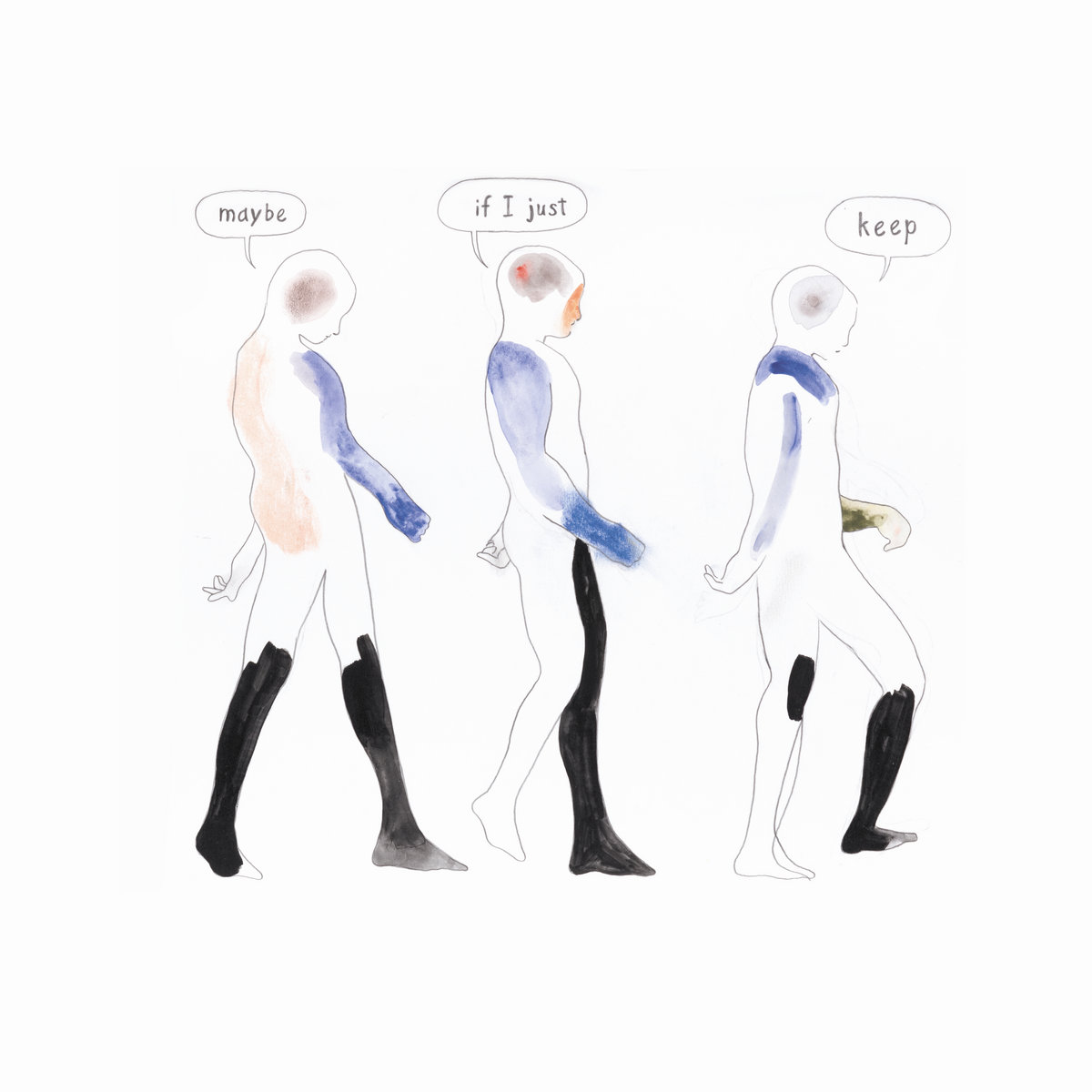 This latest album from the consistently fascinating Atkinson is yet another plunge into a vibrantly textured and otherworldly dreamspace, this time drawing inspiration from an abstract dialog between house and landscape. Or more specifically, "Inside and outside, different ways of orienting a body towards the world." In keeping with that theme, Atkinson "revisited twentieth-century women artists who variously chose, and were chosen by, their homes as a place to work." Naturally, there are some other conceptual layers as well (this being a Félicia Atkinson album, after all). One of the more interesting ones is the decision to give the album a name that resembles a "fake title of a fake Godard film." In an obvious sense, that is apt given how Image Langage feels like a film with no actual images, but Godard's mischievous meaning-dissolving weirdness is also manifested in how Atkinson wields and repurposes her sounds. In more concrete terms, that means that Atkinson deliberately used instruments alternately like field recordings or characters in a murky, surreal narrative and often reduces her voice to an unpredictably drifting and elusive presence. The overall effect is like being lost in a beautiful dream where an unreliable narrator periodically drifts in with riddle-like non-clues that only lead me deeper into Atkinson's eerie, soft-focus enigma.
This latest album from the consistently fascinating Atkinson is yet another plunge into a vibrantly textured and otherworldly dreamspace, this time drawing inspiration from an abstract dialog between house and landscape. Or more specifically, "Inside and outside, different ways of orienting a body towards the world." In keeping with that theme, Atkinson "revisited twentieth-century women artists who variously chose, and were chosen by, their homes as a place to work." Naturally, there are some other conceptual layers as well (this being a Félicia Atkinson album, after all). One of the more interesting ones is the decision to give the album a name that resembles a "fake title of a fake Godard film." In an obvious sense, that is apt given how Image Langage feels like a film with no actual images, but Godard's mischievous meaning-dissolving weirdness is also manifested in how Atkinson wields and repurposes her sounds. In more concrete terms, that means that Atkinson deliberately used instruments alternately like field recordings or characters in a murky, surreal narrative and often reduces her voice to an unpredictably drifting and elusive presence. The overall effect is like being lost in a beautiful dream where an unreliable narrator periodically drifts in with riddle-like non-clues that only lead me deeper into Atkinson's eerie, soft-focus enigma. After a handful of teasing and divergent singles, Caterina Barbieri's first full-length on her own light-years imprint is finally here. To be honest, I had some early apprehensions about how well Spirit Exit would stack up against previous releases, as this is an unusual Barbieri album for a couple of significant reasons. The most obvious one, of course, is that this is the first of the Milan-based synth visionary's albums to feature vocal pieces. Equally significant is how the album was composed and recorded, however, as Barbieri's previous releases gradually took shape from her eternally evolving live performances. Spirit Exit, on the other hand, is "100% studio music, written and recorded amidst Milan's infamous, dramatic extremely strict two-month lockdown...at the very start of the pandemic in early 2020." The drama and darkness of the period unquestionably surface a lot on these pieces, but the unraveling of civilization was but one of Barbieri's major influences at the time, as Spirit Exit was also inspired by "female philosophers, mystics and poets spread across time...united in their strength at cultivating vast internal worlds." Barbieri is no slouch at cultivating vast internal worlds herself, as evidenced by the "psycho-physical effects of pattern-based repetition" explored in her earlier work and the second half of the album features several pieces that feel like instant classics. Some of Barbieri's attempts to expand her vision into more pop and dance-inspired places work a bit less well to my ears, which ultimately gives Spirit Exit a bit of a "transitional album" feel, but those pieces may someday dazzle me after being further honed by live performances or inspired collaborations (she previously managed to floor me once with Fantas and again with Fantas Variations, after all).
After a handful of teasing and divergent singles, Caterina Barbieri's first full-length on her own light-years imprint is finally here. To be honest, I had some early apprehensions about how well Spirit Exit would stack up against previous releases, as this is an unusual Barbieri album for a couple of significant reasons. The most obvious one, of course, is that this is the first of the Milan-based synth visionary's albums to feature vocal pieces. Equally significant is how the album was composed and recorded, however, as Barbieri's previous releases gradually took shape from her eternally evolving live performances. Spirit Exit, on the other hand, is "100% studio music, written and recorded amidst Milan's infamous, dramatic extremely strict two-month lockdown...at the very start of the pandemic in early 2020." The drama and darkness of the period unquestionably surface a lot on these pieces, but the unraveling of civilization was but one of Barbieri's major influences at the time, as Spirit Exit was also inspired by "female philosophers, mystics and poets spread across time...united in their strength at cultivating vast internal worlds." Barbieri is no slouch at cultivating vast internal worlds herself, as evidenced by the "psycho-physical effects of pattern-based repetition" explored in her earlier work and the second half of the album features several pieces that feel like instant classics. Some of Barbieri's attempts to expand her vision into more pop and dance-inspired places work a bit less well to my ears, which ultimately gives Spirit Exit a bit of a "transitional album" feel, but those pieces may someday dazzle me after being further honed by live performances or inspired collaborations (she previously managed to floor me once with Fantas and again with Fantas Variations, after all). John McGuire has an impressive background in the study and evolution of electronic music: not least his time with Stockhausen at Darmstadt summer schools and subsequent commissions for German radio. Pulse Music is a unique and lively collection (1975-79) that skates across similar post-minimalist terrain as Reich and Riley and kills any lingering debate about the merits of serialism. McGuire created pulse layers in the studios of WDR and the University of Cologne, which to this day possess astounding clarity and separation, allied to marvelous tempo changes.
John McGuire has an impressive background in the study and evolution of electronic music: not least his time with Stockhausen at Darmstadt summer schools and subsequent commissions for German radio. Pulse Music is a unique and lively collection (1975-79) that skates across similar post-minimalist terrain as Reich and Riley and kills any lingering debate about the merits of serialism. McGuire created pulse layers in the studios of WDR and the University of Cologne, which to this day possess astounding clarity and separation, allied to marvelous tempo changes. This long-awaited follow up to Malone's 2019 cult masterpiece The Sacrificial Code is an unexpected blend of the familiar and the unfamiliar, as the Stockholm-based composer trades in her now signature pipe organ for "a complex electroacoustic ensemble." While that new approach certainly features an ambitiously expanded instrumental palette (trombone, bass clarinet, boîte à bourdon. sinewave generator, and ARP 2500 synth), Living Torch is still instantly recognizable as Malone's work both stylistically and structurally. Notably, the piece was "commissioned by GRM for its legendary loudspeaker orchestra," which makes a lot of sense in hindsight, as Living Torch sometimes improbably feels like the work of a drone-obsessed medieval organist who somehow managed to get ahold of Sunn O)))'s gear and some ancient battle horns. Given those enhancements, Living Torch can reasonably be described as a more conspicuously doom-inspired release than The Sacrificial Code. Admittedly, that takes this particular album a bit out of my own personal comfort zone, but I love it anyway and remain firm in my belief that Malone is one of the most singular and fascinating composers of her generation.
This long-awaited follow up to Malone's 2019 cult masterpiece The Sacrificial Code is an unexpected blend of the familiar and the unfamiliar, as the Stockholm-based composer trades in her now signature pipe organ for "a complex electroacoustic ensemble." While that new approach certainly features an ambitiously expanded instrumental palette (trombone, bass clarinet, boîte à bourdon. sinewave generator, and ARP 2500 synth), Living Torch is still instantly recognizable as Malone's work both stylistically and structurally. Notably, the piece was "commissioned by GRM for its legendary loudspeaker orchestra," which makes a lot of sense in hindsight, as Living Torch sometimes improbably feels like the work of a drone-obsessed medieval organist who somehow managed to get ahold of Sunn O)))'s gear and some ancient battle horns. Given those enhancements, Living Torch can reasonably be described as a more conspicuously doom-inspired release than The Sacrificial Code. Admittedly, that takes this particular album a bit out of my own personal comfort zone, but I love it anyway and remain firm in my belief that Malone is one of the most singular and fascinating composers of her generation. On this latest full-length, the perennially eclectic and boldly adventurous duo of Drew Daniel and MC Schmidt take a break from mining weird and esoteric source material to focus their energies on paying homage to underheard Polish composer and Krzysztof Penderecki associate Bogusław Schaeffer. Matmos were given full access to work their mindbending magic on Schaeffer's complete recorded works and the resultant album is as characteristically unpredictable and hard-to-categorize as ever: instead of remixing or reinterpreting the Polish composer's work, Matmos instead took "tissue samples of DNA from past compositions" and "mutated them into entirely new organisms that throb with an alien vitality." Put another way, Regards/Ukłony dla Bogusław Schaeffer attempts to create a conversation or bridge between the "utopian 1960s Polish avant-garde" and "the contemporary dystopian cultural moment." That is certainly intriguing and fertile terrain for a Matmos album, but the resultant songs wound up somewhere even more delightful and confounding than usual, often approximating a collision between fragmented exotica, kosmische, and a Kubrickian sci-fi nightmare. Naturally, that will be very appealing territory for most long-time Matmos fans, as this album is an especially inspired "everything and the kitchen sink" tour de force of quite disparate stylistic threads woven together in playfully disorienting and mischievous fashion by an talented international cast of virtuousos, eccentric visionaries, and plunderphonic magpies.
On this latest full-length, the perennially eclectic and boldly adventurous duo of Drew Daniel and MC Schmidt take a break from mining weird and esoteric source material to focus their energies on paying homage to underheard Polish composer and Krzysztof Penderecki associate Bogusław Schaeffer. Matmos were given full access to work their mindbending magic on Schaeffer's complete recorded works and the resultant album is as characteristically unpredictable and hard-to-categorize as ever: instead of remixing or reinterpreting the Polish composer's work, Matmos instead took "tissue samples of DNA from past compositions" and "mutated them into entirely new organisms that throb with an alien vitality." Put another way, Regards/Ukłony dla Bogusław Schaeffer attempts to create a conversation or bridge between the "utopian 1960s Polish avant-garde" and "the contemporary dystopian cultural moment." That is certainly intriguing and fertile terrain for a Matmos album, but the resultant songs wound up somewhere even more delightful and confounding than usual, often approximating a collision between fragmented exotica, kosmische, and a Kubrickian sci-fi nightmare. Naturally, that will be very appealing territory for most long-time Matmos fans, as this album is an especially inspired "everything and the kitchen sink" tour de force of quite disparate stylistic threads woven together in playfully disorienting and mischievous fashion by an talented international cast of virtuousos, eccentric visionaries, and plunderphonic magpies.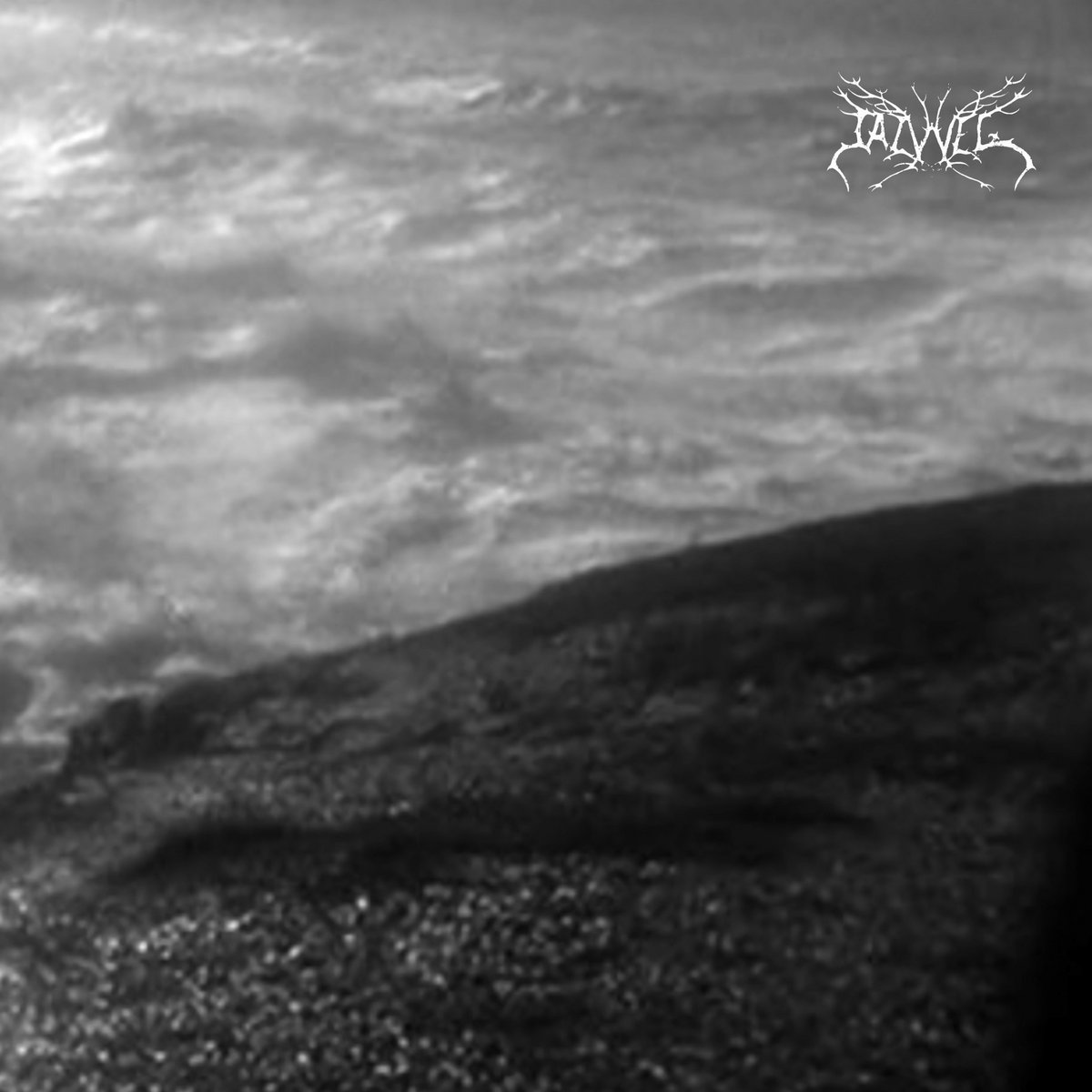 This is my first deep immersion into Joëlle Vinciarelli & Eric Lombaert's deeply unconventional "free metal" duo, but I have long been a fan of the pair's noise/drone band La Morte Young (as well as Vinciarelli's repeat collaborations with My Cat is an Alien). Notably, there is absolutely nothing recognizably "metal" about this latest release, as the closest kindred spirits are probably outer limits psychonauts like the LAFMS milieu or Borbetomagus. However, even those signposts are inadequate at conveying how far Talweg have descended into their own personal rabbit hole with this album, as these four pieces feel both unstuck in time and decidedly pagan/occult-inspired (which makes sense, given Vinciarelli's passion for collecting unusual and ancient instruments). Further muddying the waters, this album arguably captures the duo in "soundtrack mode," as two of the pieces are early/rehearsal versions of pieces composed for a Monster Chetwynd exhibition, while a third borrows a nursery rhyme from Marcel Hanoun's "Le Printemps" as its central theme. While "rehearsals for an exhibition soundtrack" admittedly does not sound all that appealing on paper, these recordings are quite compelling in reality, as Des tourments si grands often feels like a remarkably inspired and deeply unconventional stab at outsider free jazz. Fans of Vinciarelli's work with MCIAA will definitely want to investigate this one, as it journeys into similarly alien territory, but the addition of Lombaert's killer drumming takes that aesthetic in a far more explosive and visceral direction.
This is my first deep immersion into Joëlle Vinciarelli & Eric Lombaert's deeply unconventional "free metal" duo, but I have long been a fan of the pair's noise/drone band La Morte Young (as well as Vinciarelli's repeat collaborations with My Cat is an Alien). Notably, there is absolutely nothing recognizably "metal" about this latest release, as the closest kindred spirits are probably outer limits psychonauts like the LAFMS milieu or Borbetomagus. However, even those signposts are inadequate at conveying how far Talweg have descended into their own personal rabbit hole with this album, as these four pieces feel both unstuck in time and decidedly pagan/occult-inspired (which makes sense, given Vinciarelli's passion for collecting unusual and ancient instruments). Further muddying the waters, this album arguably captures the duo in "soundtrack mode," as two of the pieces are early/rehearsal versions of pieces composed for a Monster Chetwynd exhibition, while a third borrows a nursery rhyme from Marcel Hanoun's "Le Printemps" as its central theme. While "rehearsals for an exhibition soundtrack" admittedly does not sound all that appealing on paper, these recordings are quite compelling in reality, as Des tourments si grands often feels like a remarkably inspired and deeply unconventional stab at outsider free jazz. Fans of Vinciarelli's work with MCIAA will definitely want to investigate this one, as it journeys into similarly alien territory, but the addition of Lombaert's killer drumming takes that aesthetic in a far more explosive and visceral direction. Every now and then, I stumble upon a singular artist whose work has somehow managed to remain largely undocumented and entirely under the radar all but the most devout underground music fans. Aaron Taylor Kuffner is the latest visionary to fall into this category, as his Zemi17 project has been around for a quarter century now and he has only just gotten around to releasing his full-length debut. Notably, Gamelatron Bidadari is quite a departure from Zemi17's previous two EPs on The Bunker's house label, as Impressions (2014) and Zipper (2016) were an attempt to integrate Taylor Kuffner's techno past with more natural and timeless sounds originating from his time spent studying gamelan in Indonesia. On this latest release, all traces of Zemi17's dancefloor past have disappeared to showcase another side of Taylor Kuffner's unique artistry: the Gamelatron project that he co-created in 2008, which is billed as "the world’s first fully robotic gamelan orchestra." Since the project's inception, Taylor Kuffner has built more than 70 site-specific kinetic sculptures and provided his signature "immersive, visceral experience" to more than a million people across the globe. The Gamelatron Bidadari captured here is but one of those sculptures and originally debuted as part of an exhibit entitled "No Spectators: The Art of Burning Man" at The Smithsonian's Renwick gallery. While a lot of site-specific installations understandably do not translate terribly well to home listening, this one is a delightful exception, as the resultant recordings feel like an ingenious twist on a timeless favorite, taking traditional gamelan music into an even more loopingly hypnotic direction than usual.
Every now and then, I stumble upon a singular artist whose work has somehow managed to remain largely undocumented and entirely under the radar all but the most devout underground music fans. Aaron Taylor Kuffner is the latest visionary to fall into this category, as his Zemi17 project has been around for a quarter century now and he has only just gotten around to releasing his full-length debut. Notably, Gamelatron Bidadari is quite a departure from Zemi17's previous two EPs on The Bunker's house label, as Impressions (2014) and Zipper (2016) were an attempt to integrate Taylor Kuffner's techno past with more natural and timeless sounds originating from his time spent studying gamelan in Indonesia. On this latest release, all traces of Zemi17's dancefloor past have disappeared to showcase another side of Taylor Kuffner's unique artistry: the Gamelatron project that he co-created in 2008, which is billed as "the world’s first fully robotic gamelan orchestra." Since the project's inception, Taylor Kuffner has built more than 70 site-specific kinetic sculptures and provided his signature "immersive, visceral experience" to more than a million people across the globe. The Gamelatron Bidadari captured here is but one of those sculptures and originally debuted as part of an exhibit entitled "No Spectators: The Art of Burning Man" at The Smithsonian's Renwick gallery. While a lot of site-specific installations understandably do not translate terribly well to home listening, this one is a delightful exception, as the resultant recordings feel like an ingenious twist on a timeless favorite, taking traditional gamelan music into an even more loopingly hypnotic direction than usual. Originally a musical radio play, these twelve tracks excavate and spotlight the life and work of original Beat poet Bob Kaufman; and with Kaufman the life and the work are genuinely inseparable. A mentor to Kerouac, and dubbed the Black American Rimbaud, Kaufman endured savage SFPD brutality, electroshock treatment, and incarceration, before his young and obscure death in abject poverty. Kaufman had purposefully stilled his own voice with a vow of silence stretching from the JFK assassination until the end of the Vietnam War, yet here it still resounds with the speed and spirit of surrealist jazz, forever “lost in a dream world, where time is told with a beat.”
Originally a musical radio play, these twelve tracks excavate and spotlight the life and work of original Beat poet Bob Kaufman; and with Kaufman the life and the work are genuinely inseparable. A mentor to Kerouac, and dubbed the Black American Rimbaud, Kaufman endured savage SFPD brutality, electroshock treatment, and incarceration, before his young and obscure death in abject poverty. Kaufman had purposefully stilled his own voice with a vow of silence stretching from the JFK assassination until the end of the Vietnam War, yet here it still resounds with the speed and spirit of surrealist jazz, forever “lost in a dream world, where time is told with a beat.”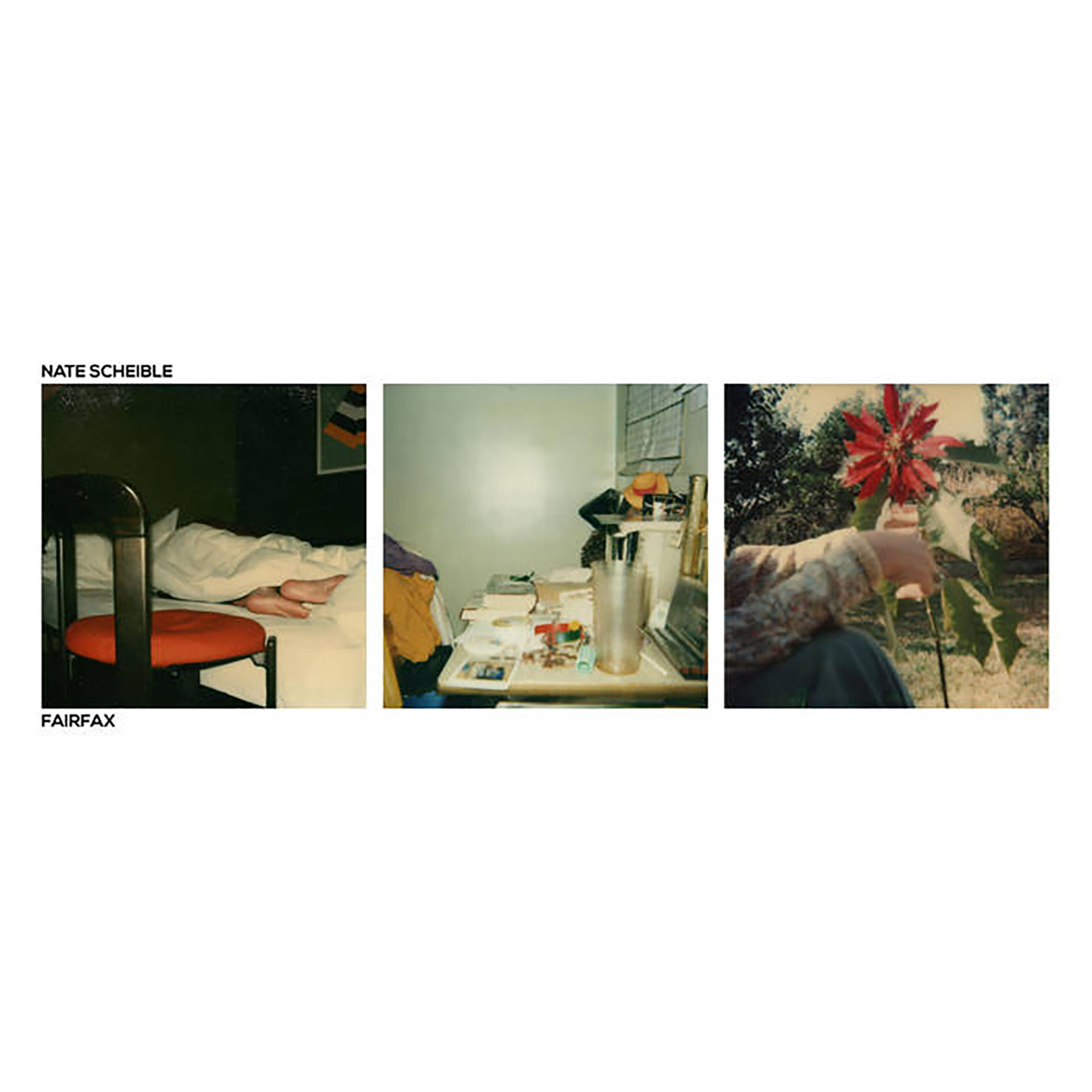
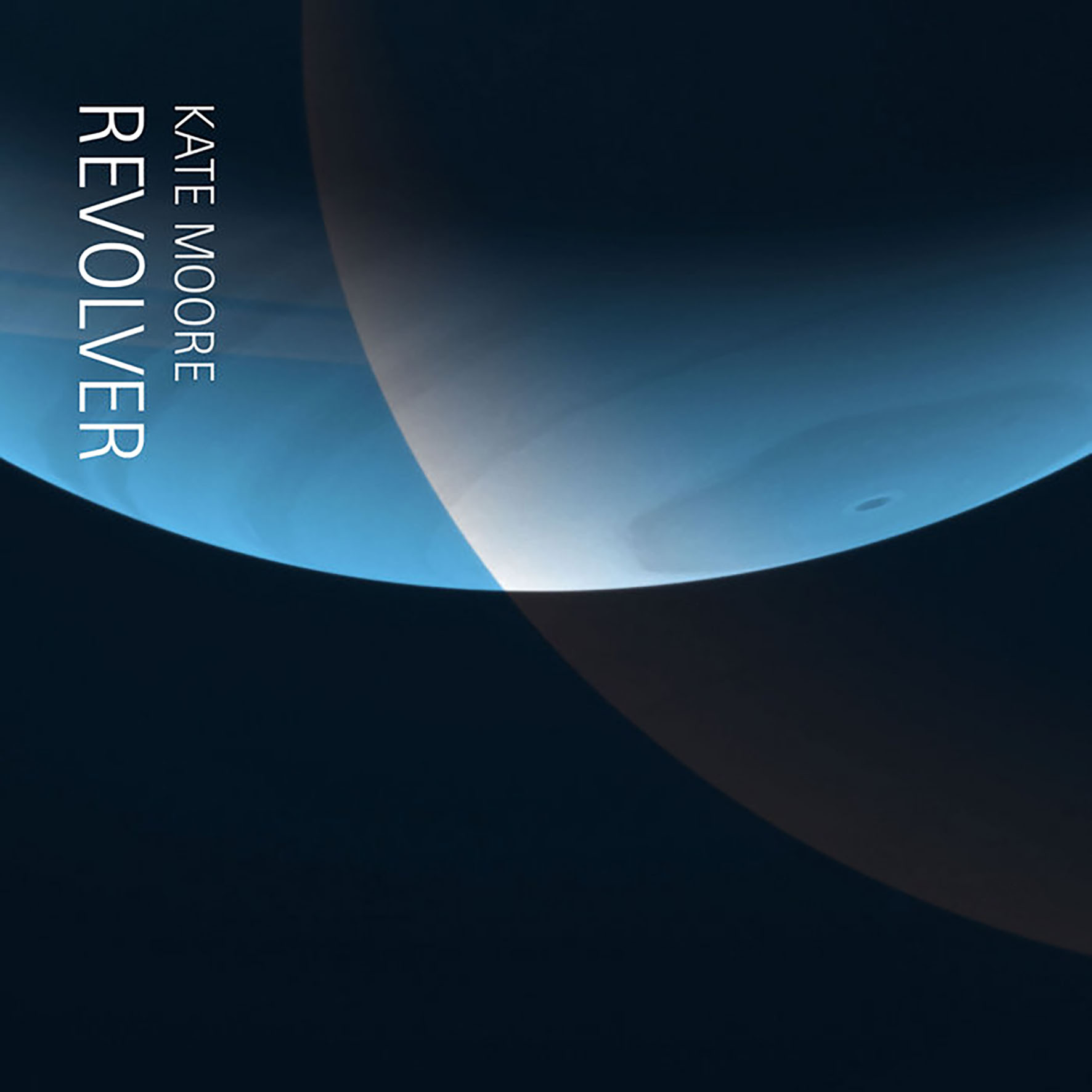


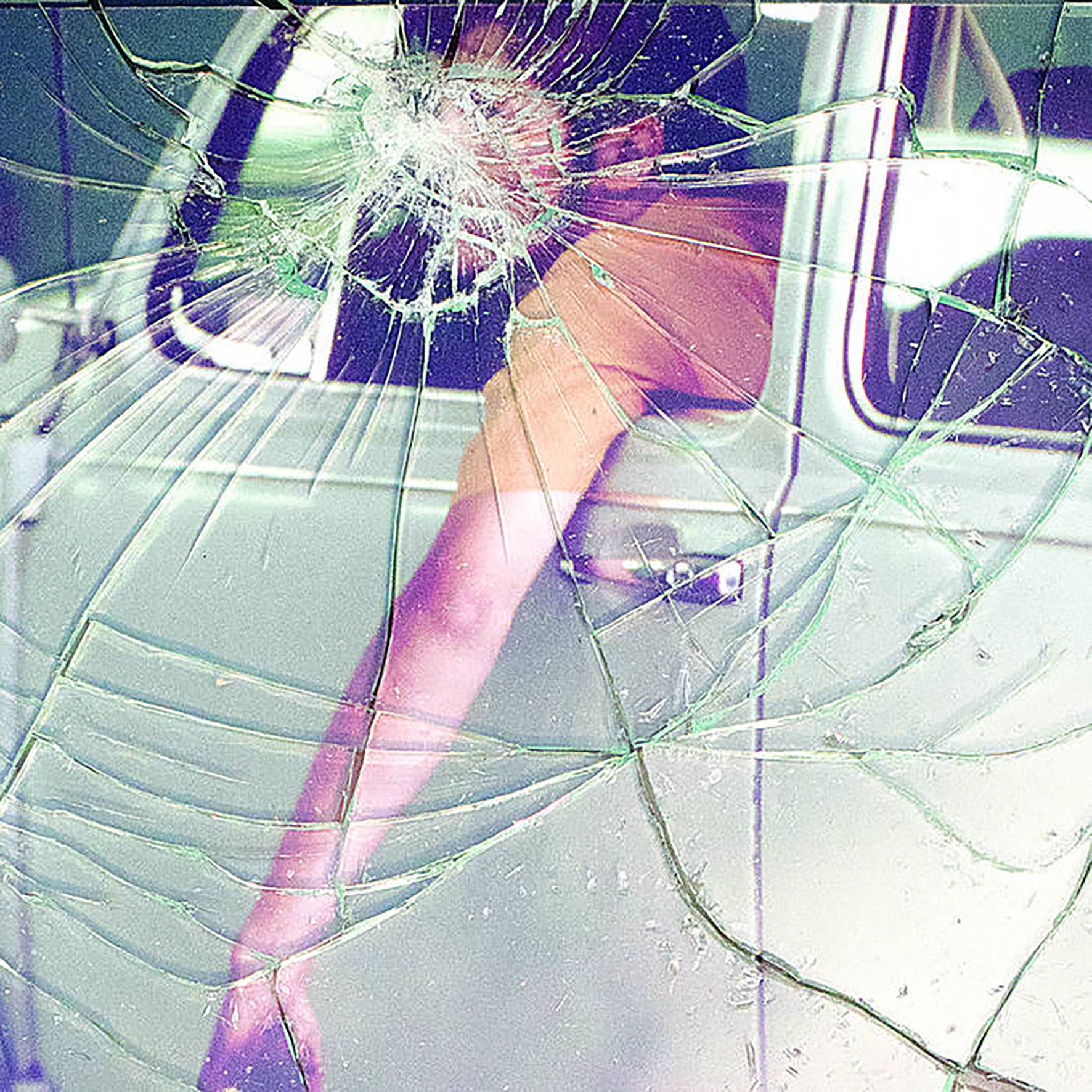
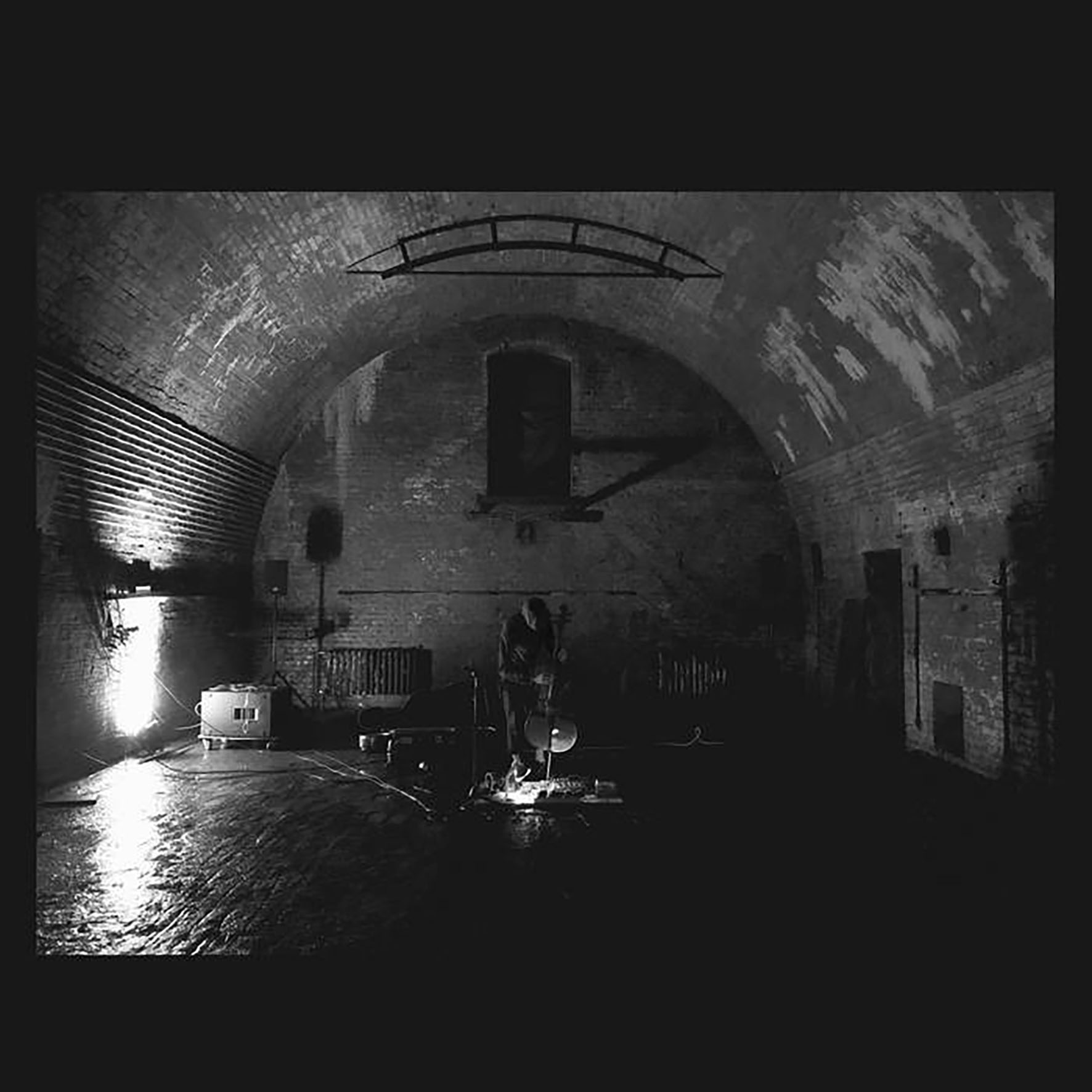 This latest release from Erik K. Skodvin's long-running solo project is billed as "zen music for disturbed souls."
This latest release from Erik K. Skodvin's long-running solo project is billed as "zen music for disturbed souls."
